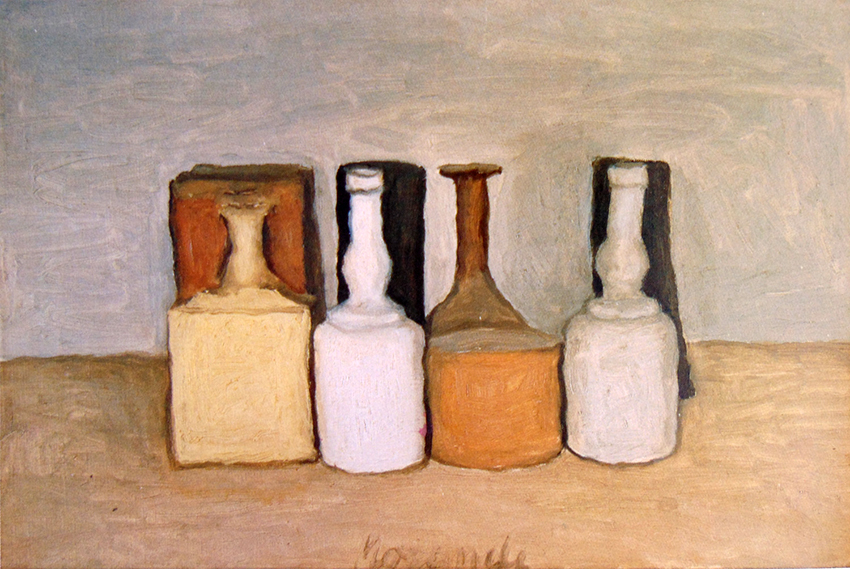Thoughts about my life-long appreciation of the Bolognese artist, Giorgio Morandi.

I first saw the work of Giorgio Morandi in Florence Italy in 1958. At that time I had never heard of him, but his small intimate paintings inspired me to stop looking over the horizon in my own search for a direction as a young artist, and pay closer attention to my personal world, right under my nose.
Morandi lived in his family home in Bologna Italy with his sisters most of his life. His early living came from teaching etching at the local art academy. I have always related to his quiet life. His ordinary middle class origins as similar to my own. Certainly he was aware of the modern movements around him, but his production of etchings and paintings were mostly small domestic studies made for his local friends. For years after I first saw his work, I kept an old yellowed newspaper photo of him pinned to my studio wall, to keep his simple vision of being an artist before me everyday.
In our time Morandi has come to be called the painter’s painter. But there were those who understood his work early on. In 1937 Roberto Longhi, Italy’s most prominent modern art historian who also lived in Bologna, declared Morandi to be Italy’s greatest modern painter, a shocking assertion that was mocked for years, until in 1957 he won the São Paolo modern painters prize over Chagall and Jackson Pollack.
While Morandi was always aware of the art world around him, he ultimately found the simplest household containers—vases, bottles, jars, boxes—as a sufficient treasure trove that held the minute distinctions of shape, color, light, and texture that would occupy him for a lifetime. And out of that focus, he produced a body of work that are, for me, a small universe of exquisite compositional variations that can only be earned through years of practice in developing a personal and rigorous painter’s vocabulary.
What do I mean by a painter’s vocabulary? As Marshall McLuhan said years ago, “the medium IS the message.” That is, the kinesthetic skills of managing materials and processes, a function of the rhythm of practice, practice, practice—develops an integrated way of mark-making that lets the creative soul fly free. Whether looking at Morandi, Van Gogh, Cezanne or Pollack, we are aware we are in the hands of a masterful mark-maker who not only reveals a vision, but for art practitioners shows us what is possible when we are ready to do the work.




2 Responses to Morandi: The Painter’s Painter